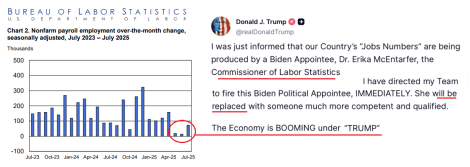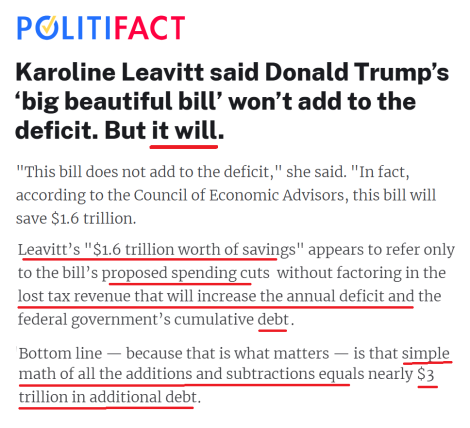Chris Gavaler's Blog
October 13, 2025
Talking to MAGA

Since Trump took office, the Richmond Times-Dispatch has published seven of my commentaries (and I’ve republished versions of them on this blog here, here, here, here, here, here, here, here, plus an eighth here).
I’ve received a handful of emails in response, some thanking me, some insulting me. I’ve engaged with all but one (my patience has limits). My responses are below, but I am omitting the original letters (I was told once that removing names is not ethically sufficient to print someone’s letter without permission), but I suspect the gaps are easily filled.
I’m also filling the gaps with the 30-second sketches I made during the ugliest hour of last November’s election night as I slowly understood that Trump would win. I didn’t realize I had been channeling MAGA voters until I looked at them again the next morning. I don’t remember when I added the red letters.

Dear ——,
Thank you for taking the time to read my commentary and to compose a thoughtful response. You seem like a person who is sincerely engaged. I certainly have no desire to bash you, and I’m sorry if you thought I would respond that way.
I do question some of your conclusions though. My short commentary does not relitigate the first trial or the decision made by Judge Engoron. I focus on the appeals judgment of a higher court, where four of the five judges reaffirmed the original verdict that Trump is guilty of the five listed crimes.
To be clear, I did not “say” he committed these crimes. Two courts ruled that he committed them. I have not read the court transcripts, but I think it’s safe for us to assume that the defense lawyers brought up the issues you raised (“typical” and “normal” business practices) as well as many many more. If you’re interested in why two courts rejected those arguments, the reasons for their judgments are stated in detail in their decisions, which can be easily downloaded.
You also claim that I am “not giving the full story” because I did not mention “Letitia James has committed mortgage fraud.” I know very little about the New York AG, but a quick search reveals that you are referring to an allegation that she committed fraud on a mortgage application. James has not been charged, let alone tried and convicted, of anything. To suggest that I need to include an allegation against James in a discussion of Trump’s multiple and twice-affirmed convictions does not seem reasonable. If James is ultimately found guilty of falsifying a mortgage application, that would not alter the fact that the president of the U.S. was convicted of “falsifying business records, issuing false financial statements, conspiracy to falsify business records, conspiracy to issue false financial statements, and conspiracy to commit insurance fraud.”
But it would be reasonable to critique my commentary if I had not included the fact that the appeals court removed the penalty imposed in the original judgment. That would be an example of “not giving the full story.” My commentary begins with that fact.
You also write that “the issuance of statistics from the government from the previous administration, was laughable in all areas of figures.” I assume you’re using hyperbole? Regardless, it would be helpful if you had provided at least one verifiable example.
You then conclude that I am “on the far left, and are incapable of taking a balanced look at anything political.”
Based on the content of your letter, I think a neutral reader would draw a similar conclusion about your political capabilities.
But I am glad that you have been open to both parties in the past. I agree that a centrist federal government would be best.
I’m not sure why you put the word “facts” in quotes. I work hard to center verifiable facts in all my commentary, and I will continue to do so.
Best,

Dear —–,
I have in no way implied that I have degrees in law or economics.
Regarding Trump’s trial, I reported two facts: 1) that his penalty was struck on appeal, and 2) that his five crimes were reaffirmed on appeal: “falsifying business records, issuing false financial statements, conspiracy to falsify business records, conspiracy to issue false financial statements, and conspiracy to commit insurance fraud.”
Those are both verifiable facts. Neither is based on my opinion.
Regarding the first trial, I believe the judge was Arthur F. Engoron. However, I was referencing the appeals court, which consists of five judges: Dianne T. Renwick, P.J., Peter H. Moulton, David Friedman, John R. Higgitt, and Llinét M. Rosado. A four-of-five majority affirmed that Trump was properly convicted of the crimes listed above.
Again, that is a verifiable fact. It is not based on my opinion.
You also refer to “the senseless, untrue things you say in your article,” but you provide no examples.
But we do seem to agree that the debt has been increasing under multiple presidents.
I’m willing to engage in a meaningful exchange, but spouting “Lunacy!” and “tripe” and “TDS” are not thoughtful positions. Rather than wasting more of our mutual time, I suggest you not write to me again.
Thank you,

Dear —–,
The penalty was not overturned by the Supreme Court. It was overturned by an appeals court, the members of whom I listed in my last email and whom you said you believe are controlled by the Democratic party and wish to destroy Trump and his family — though if that were true, why did they overturn the penalty?
Also, my commentary begins with the fact that the penalty was overturned. Did you somehow miss that?
This exchange seems increasingly pointless. I am asking: would you please stop emailing me?
Thank you,

Dear —-,
You have an impressive knowledge of German history, far superior to mine. I very much hope that my concerns are merely “foolish hand wringing” and that, as you predict, “the Constitution will survive four more years of Donald Trump.”
If I may quibble though, regarding the Jan 6th insurrection, you wrote: “the perpetrators were held to account by our judicial system.”
Is that statement still relevant after Trump’s pardons? To follow your comparison to Germany, aren’t the members of the Proud Boys and the Oath Keepers free again to “terrorize any opposition”?
And a small clarification: “a significant majority of voters validated his aims.” You mean a significant plurality. Trump won just under a majority, 49.9%.
But this is the central issue: “up to this point, when our judiciary states that he’s crossed the line, he has complied.”
That doesn’t seem to be the case with some deportations, but overall, I agree he has not fully crossed that line. If he never does, then I also agree with your assessment.
My concern is what happens next. You are clearly paying careful attention, and I very much hope you will continue to do that.
Best,

Dear —-,
Thanks for your comment.
One clarification though: “One can nuance whether due process does or does not apply to non-citizens, it is a matter of interpretation.” That is false. It is a long and fully settled legal question. It is unconstitutional to deport anyone without due process. Even the Trump-appointed district judge who approved Trump’s use of the Alien Enemies Act yesterday said the administration had violated the Fifth Amendment’s due process clause.
You also ask: “What was the rationale of the Biden Administration for allowing hundreds of thousands of unvetted people to illegally enter this country?” and, rephrased, “Why were these people allowed to enter the country in the first place?”
The question implies that you are focused on partisan summaries. While there are differences between Trump and Biden, there are far more similarities. Biden even kept Trump’s “Title 42” in place and defended the policy in court until he lost and was forced to revoke the pandemic-era immigration ban.
In short, no one “allowed” undocumented immigrants to enter the country. Under Biden, border patrols arrested people entering illegally, same as under Trump. And Biden deported most of them. If you don’t trust U.S. media, I suggest trying the BBC.
I’m also confused by your claim: “allowing the immigration laws of this country to be ignored also means you hate America.”
What immigration laws are you saying were ignored? I’m not aware of any.
Regardless, immigration laws, like any laws, are changeable and have changed many times over the decades. But due process is a bedrock democratic principle established in our Bill of Rights.
You seem like a smart, well-intentioned person who cares about our country. I assume there are many issues we would disagree about, but I also have to believe that you understand the fundamental importance of due process.
If you want undocumented immigrants to be deported, I only ask that you demand it be done legally and constitutionally.
Best,

Dear —,
I detailed roughly a dozen ways the president is violating the Constitution and what danger that poses for U.S. democracy. Your takeaway was: “How dare you compare the Trump administration to 1933 Germany.”
The comparison wasn’t to the Trump administration. I compared our current Congress to the German parliament that abdicated its powers: “In 1933, Germany’s congress passed a law giving legislative power to the executive branch, converting their democracy to a dictatorship.”
The U.S. is not there yet. But two weeks ago, House Republicans did pass a bill that prevents Congress from ending a president’s emergency declarations. They have also declined to hold oversight hearings regarding the defunding of programs legally required through previously passed legislation. And in response to yesterday’s fiasco, the Speaker said no investigation or disciplinary response is needed, though the use of a commercial app and the accidental inclusion of a journalist in group chat discussing military plans far exceeds the security lapses of Clinton’s private email server.
I’m thinking very carefully about our current situation. My concerns are not about partisanship or ideology. It does not matter whether either of us supports or opposes the content of the president’s executive orders. The problem is how the president is violating the Constitution to achieve his preferences.
This puts people who agree with his preferences in a complex position. Do you want to live in a moderate democracy or a rightwing dictatorship?
In the reverse situation, I would choose a moderate democracy over a leftwing dictatorship. That’s why I mentioned unconstitutional actions by FDR and Obama and how they were blocked. I personally support the goals of DACA, but it needed to be accomplished through legislation or not at all.
I wish Trump supporters felt the same way about their political preferences.
I’m sorry you consider my concerns “BS.” I hope you will look more carefully at the president’s actions.
Sincerely,

Dear —,
I also sincerely appreciate your response. If you’re still interested I’ll continue.
You said: “I do have concerns about what’s happening right now but they do not rise to the level of imminent dictatorship.”
I basically agree. If things do not progress further in an unconstitutional direction, it would be hyperbole to call Trump a dictator. But my concerns are focused on what happens next.
SCOTUS will determine the outcome of the 130 lawsuits filed against the Trump administration (either by ruling directly on them or allowing lower court rulings to stand). If Trump obeys those rulings, then democracy will be fine. But he has already disobeyed some judges, while also advocating for the removal of judges who disagree with him and falsely claiming that courts don’t have the power to overturn his executive orders.
That is dangerous talk. But if it remains merely talk, we’ll be fine. If Trump disobeys further, judges will appropriately hold him in contempt, and if he ignores those contempt rulings, he will be functioning as a dictator and not as a president as defined and constrained by the Constitution.
You said, “I’m open to trying a different path after experiencing the last 4 years.”
That deeply disturbs me. I’ve been voting in presidential elections since my first candidate Walter Mondale lost in 1984. I’ve watched the White House, House, Senate, and Supreme Court change back and forth multiple times. That’s the path of democracy the U.S. has been on since ratifying the Constitution in 1788.
The different path you seem to be accepting is something else.
I’m not being hyperbolic when I say the Constitution is how Americans don’t kill each other. We are a massive nation that includes many people with violently opposing viewpoints. Yet we’ve had only one civil war. I am willing to accept Trump as president because he was elected, and I can focus my political efforts on Democrats retaking the House in the next election, and the White House the election after that.
Remove that structure, and what happens? Trump has said multiple times that he intends to have a third term. That is very dangerous talk.
I hope that you and other conservatives will prioritize democracy over your political preferences. If Trump tips the U.S. into dictatorship, those who currently consider themselves Trump supporters will be the only people in a position to stop him.
Thanks,





October 6, 2025
The DEI Hypocrite Running for Governor

GOP gubernatorial candidate Winsome Earle-Sears calls DEI a “cancer.” The initials stand for “diversity,” “equity,” and “inclusion,” but to her they seem to mean Black victimhood. “Slaves,” she says, “did not die in the fields so that we could call ourselves victims now.” She accuses Democrats of thinking that “minorities can’t succeed without DEI,” echoing Donald Trump’s executive order declaring DEI “dangerous, demeaning, and immoral.”
As with the rebranding of “Critical Race Theory,” it’s unclear what “DEI” actually means. When Judge Abelson placed a preliminary injunction on Trump’s executive order last February, he cited its “vagueness” as one of its unconstitutional qualities. The president failed to “define any of the operative terms, such as ‘DEI,’ ‘equity-related,’ ‘promoting DEI,’ ‘illegal DEI,’ ‘illegal DEI and DEIA policies,’ or ‘illegal discrimination or preferences.’”
Governor Youngkin only objects to the middle letter, issuing his own executive order renaming his administration’s DEI office “Diversity, Opportunity, and Inclusion.” Youngkin applauds what he calls “merit-based opportunity,” implying that DEI policies discriminate against White men by giving preference to less qualified women and non-White people. Among some conservatives, any woman or non-White person in any job means they were hired only for their gender or race. Charlie Kirk, for instance, said: “If I’m dealing with somebody in customer service who’s a moronic Black woman, I wonder: is she there because of her excellence, or is she there because of affirmative action?”
Earle-Sears is now running for the job of governor. Given her visceral condemnation of DEI, she should take great efforts to ensure that voters understand that her gender and race are irrelevant to her candidacy. All that matters are her merits.
And yet, Earle-Sears openly embraced “DEI” in her previous job. When advertising her small business, Shenandoah Appliance Plumbing & Electric, she emphasized that it was “female-” and “minority-owned” to attract federal contractors looking to meet their “diversity requirements.”
Earle-Sears is also an author. Her advertising description of her 2023 memoir, How Sweet It Is: Defending the American Dream, announces her race and gender in the first four words: “The first Black woman elected to statewide office in Virginia.”
Despite his anti-DEI posturing, her current boss also champions her “DEI” qualities. Youngkin’s Certificate of Recognition begins by identifying her race and gender: “Winsome Earle-Sears, a native of Kingston, Jamaica, immigrated to the United States at the age of six, and blazed a path as the first female and first female veteran to serve as lieutenant governor.” After mentioning her gender twice in the first sentence, he repeats her race and gender in the second sentence, proclaiming her “the first black woman to hold statewide office.”
When Earle-Sears was met with angry voters at last year’s Labor Day parade in Buena Vista, she responded by declaring her race and gender: “They’re telling a Black woman to get off the stage. The Democrats are telling a Black woman to get off the stage!”
Earle-Sears was being heckled for her political positions, but she pointed at her race and gender instead to claim she was a victim of racism and sexism. She then praised her own party’s DEI actions, declaring her race and gender twice more: “It was the Republican Party who nominated me, a Black woman, to be lieutenant governor of Virginia. And it was the Republican party that voted for me, the first female Black immigrant Marine lieutenant governor of Virginia!”
If Earle-Sears sincerely believes race and gender don’t matter for political office, why is she shouting her race and gender at voters?
Personally, I think race and gender do matter. I think it is evidence of positive change that a Black woman has achieved such high political status in what she refers to as “the former capital of the Confederacy.” Youngkin thinks race and gender matter, too. He chose a conservative Black woman as a running mate with the strategic hope that her race and gender would attract women and Black voters while muting the progressive appeal of his Democratic opponents. And any voter should recognize that Earle-Sears is a hypocrite for attacking “DEI” while repeatedly stressing her own race and gender as she campaigns for Virginia’s highest office.

[A version of this commentary was published in the Richmond Times-Dispatch on October 3, 2025.]
September 29, 2025
Weaving Comics
Here’s a variation on the cover of my next book, The Color of Paper:

It’s an interpretation my daughter wove last spring for my birthday. The actual cover is a photo of a Love & Rockets panel I snapped with a microscopic lens:

When she saw the mechanical pattern of CMYK dots combined to create the impression of brown skin, she recognized the similarities to the patterns she weaves by hand on her lap loom. Seriously, look how cool that is: it’s the same red, yellow, and blue pattern. Except weaving is way more astonishing because the vertical image is constructed one horizontal line at a time, and with the shifting unpredictability of combined yarns. There’s no K plate (black) predetermining the contours of the final image. There are no contours. She had to weave in dark purple yarn for the hair and shadows one horizontal line at a time too.
I also see a deeper connection between weaving and comics.
So does Barbara Postema. She applies the term “weaving” for “the retroactive resignification or projection that creates plot out of gaps” as a sequence weaves “individual panels into a sense of temporality and developing action” (113).
If I understand Postema correctly, she borrows “weave” from textile art in the same way that Scott McCloud borrows “closure” from Gestalt psychology, that Umberto Eco borrows “montage” from film theory, and that Neil Cohn borrows “grammar” from linguistics. Comics images are not woven, but they’re also not written, filmed, or perceptually closed either. (McCloud’s borrowing causes the most confusion because, while individual drawings can be perceptually closed, the relationship between two drawings cannot.)
Thierry Groensteen borrows “braiding” from hair art, but his application is both more specific and less clear than the general terms for how comics images relate. I’ve also seen Ann Miller use “metonymy” and Matt Smith and Randy Duncan “synecdoche,” both borrowed from figures of speech. And I have a vague memory of someone borrowing “ellipsis” from punctuation marks, but I can’t seem to track that down right now (possibly from an article in the International Journal of Comics Art?).
Of the eight terms – weaving, closure, montage, grammar, braiding, metonymy, synecdoche, and ellipsis – I prefer none. I instead talk about “inferences” (or, worse, “juxtapositional inferences”) to refer to the same effects.
Which means comics theory has nine terms for arguably one thing.
Though I’m sticking with “inferences” (because it’s literal and so not a borrowed term requiring a metaphorical application), I do like “weaving.” McCloud’s unfortunate use of “closure” is likely permanent (at least in the U.S.), but I would happily see “weaving” replace it. Unlike all of the other borrowed terms (except “braiding,” which I avoid for other reasons), “weaving” is self-evidently a metaphor when used to talk about comics.
When Frank King titled his 1914 Sunday comics collaborations “Crazy Quilt,” no one thought actual quilts were involved. But anyone can see how the comic “strips” are like strands of yarn weaving in and out of each other:

Quilts and comics also share the term “panels” for their most discrete units. Here’s a recent panel my daughter wove freehand:

Narrative quilting is also a thing. Harriet Powers’ 1886 The Bible Quilt, for example, includes rows, panels, and gutters that resemble and function like their comics counterparts:

A century later, a group of British Quakers and eventually Quaker groups from nine other countries wove the Quaker Tapestry, a seventy-seven-panel depiction of Quaker history:

Michael P. Graves analyzes the tapestry through McCloud’s comics definition, panel transition types, and iconic depiction, while adding:
“There is perhaps an initially unsettling reaction on the part of the reader to the application of the term ‘comics’ to a piece of art/craft work like the Quaker Tapestry, with its serious historical and deeply religious import.”
My reaction is perfectly settled, but I would clarify that the tapestry is in the comics form (which I define as sequenced images) but not in the comics medium (which is a publishing context that excludes quilts).
So, unlike comics and all of the other abovementioned terminological borrowing sources, comics and weaving actually overlap.
My favorite woven comic is an untitled work-in-progress about a very talented bunny. My daughter has completed the first three panels. I look forward to future issues.



September 22, 2025
Dear Ben

Beginning on December 4, 2016, I wrote my congressional Representative Bob Goodlatte a letter every day for nearly a year. I sent my last email on November 9, 2017, congratulating him on his decision to retire. My other blog Dear Bob chronicles all 338.
I didn’t start writing Ben Cline when he moved into Virginia’s 6th District office — but then Trump’s 49.9% popular vote “landslide” returned him to the White House, and suddenly the GOP’s tiny congressional majorities (7 seats in the House, 3 in the Senate) meant Trump would be unrestrained.
How unrestrained remains astounding.
So I’ve been writing letters again, not to my Representative but about him and his party and his party’s leader. They’ve appeared in my area newspapers, about one each month.
Here they are in reverse order:
SEPTEMBER:
In 2023, Ben Cline declared: “I came to Washington to drain the Swamp, not to make it deeper. That’s why I CANNOT in good conscience vote for this roughly $4 trillion debt increase.”
Cline promised instead to “end the trillion-dollar deficits” and “reduce spiraling debt” because they result “in untold financial hardship for the American people.”
But now that his party controls the White House and thin majorities in both houses of Congress, Cline has discarded his “conscience” to deepen “the Swamp,” increase “trillion-dollar deficits,” and increase the “spiraling debt.”
Cline voted for the One Big Beautiful Bill Act, which raised the debt ceiling by $5 trillion, to a record total of $41.1 trillion.
To be clear, Cline should vote to increase the debt ceiling. Using the debt ceiling as a partisan weapon hurts everyone. After Cline and his Freedom Caucus 2023 standoff, a rating agency downgraded U.S. credit from AAA to AA+ due to the “deterioration in standards of governance.”
Despite the massive debt increase, Cline voted for the One Big Beautiful Bill Act because it lowered taxes – for the wealthiest of Americans. Those in the top 20% income range are receiving 68% of the cuts. That’s people making over $157, 000. But the 60% making $55,000 and less only get 15%.
That massive reduction in tax revenue hurts all Americans. The U.S. credit rating was downgraded again in May 2025 due to “a persistent mismatch between spending and revenue.”
Cline hurt us all in 2023 by using the debt ceiling as a partisan weapon, and he’s hurt again in 2025 by voting for the greatest debt increase in U.S. history, revealing that his anti-debt position was always just a lie.
AUGUST:
Ben Cline’s August newsletter is a textbook on lies of omission. He begins by bragging about “meeting with folks in Winchester and Roanoke,” claiming such “conversations are a vital part of my work to ensure I stay connected with the needs and priorities of those I represent,” but Cline omits the fact that he has not held a single townhall meeting in the 6th district in all of 2025.
Cline claims that he supports “policies in Washington that work to make life more affordable for every hardworking American,” but he omits the fact that inflation has risen due to Trump tariffs which he loudly supports. Cline brags about “encouraging news with strong second quarter economic expectations,” but he omits the abysmal jobs report that so upset President Trump that he fired the director of labor statistics. Cline calls the recent 3% GDP “a significant improvement from where we were just months ago under the Biden administration,” and yet the chart he includes shows the GDP under Biden at 3% and 3.2% last year, with a high of 4.4% the year before that.
Cline celebrates DOGE cuts as a “type of oversight,” while omitting that oversight of the executive branch is the responsibility of Congress, including the subcommittees he serves on which are conducting no oversight at all. Cline ends his newsletter by celebrating the Coast Guard’s 235th birthday, while omitting that Trump fired its commandant in January and that DHS Secretary Noem cut 35% of its Flag Officer positions in May and 90% of its shore infrastructure budget in June. Cline apparently considers that “cutting the waste,” even as he thanks “the Coast Guard for their steadfast dedication to our country” as “a vital defense force.”
We deserve a representative who faces all of the facts, not just the ones he cherrypicks to mislead his own constituents.
JULY:
Rep. Ben Cline said in a June newsletter: “The House took important steps to restore fiscal responsibility by passing a historic rescissions package …” But according to the Committee for a Responsible Federal Budget, the bill would “add $2.4 trillion to primary deficits over the coming decade, adding $3.0 trillion to the debt including interest.” That’s the opposite of fiscal responsibility.
Cline also claimed that “the Department of Government Efficiency (DOGE) uncovered billions in waste … ” This is an improvement on Cline’s earlier claim that DOGE eliminated “waste, fraud, and abuse.” The Trump administration has provided no evidence of relevant fraud or abuse, and “waste” includes cancer research, rural health care access, AIDS prevention, mine safety, hurricane warnings, housing, STEM education, job training, food banks, and school lunch programs.
Cline did make one reasonable claim: “the federal government has no business dictating what kind of car you can drive.” But he follows it with a non sequitur: “Yet Democrats in Virginia were on track to follow California’s extreme mandate banning gas-powered cars by 2035.” Virginia is not the federal government. He then brags about the federal government overriding states: “I was proud to vote for the resolution signed into law by President Trump last week that blocks these electric vehicle mandates …” If the federal government has no business dictating about cars, why did Cline support a federal law protecting gas-powered cars?
Cline concludes with a hypocritical pledge: “I’ll keep fighting to stop federal overreach …” We have not seen this level of presidential overreach since FDR expanded his powers in the face of the Great Depression. Today the economy remains strong, yet Trump has falsely declared multiple power-expanding “emergencies,” which Cline has applauded. He supports federal overreach as long as the federal government is Republican.
JUNE:
In an early June newsletter, Rep. Ben Cline wrote: “Thanks to commonsense policies, families are finally seeing relief and renewed confidence in the economy.” He added: “In May, consumer confidence rose by 12.3 points, a clear sign that commonsense conservative, pro-growth policies are taking hold.”
Cline’s statements are intentionally misleading and knowingly dishonest.
Consumer confidence improved in May, but only after it had declined for five months, beginning after Trump won the election. Confidence dropped further after Trump took office and began threatening and haphazardly imposing his series of tariffs. Consumer confidence in April 2025 matched the low of April 2020 during the pandemic lockdown. That plunge is the direct result of Trump’s nonsensical trade wars. When Trump began to backoff from tariffs and stock-market rollercoasters restabilized, so did consumer confidence.
The May return to pre-tariffs confidence had nothing to do with “conservative, pro-growth policies,” and Cline knows that. Trying to spin the recovery from Trump-inflicted economic panic as a positive would be comical if it did not further reflect Cline’s indifference to truth.
And we have yet to see where Trump’s newest round of tariffs will plunge the economy and consumer confidence next.
MAY:
Our Sixth-District Rep. Ben Cline announced in a recent newsletter: “I introduced new legislation to hold foreign agents accountable,” because “foreign adversaries” pose “a serious threat to our national security” through “covert influence campaigns, often using unregistered foreign agents to shape our policies and institutions quietly.”
Cline identified a “dangerous loophole” in the Foreign Agents Registration Act (FARA) that allows “a suspected foreign agent to escape accountability by ending their relationship with a foreign government before the Department of Justice could act.” Cline responded with his Foreign Agents Transparency Act ensuring that “anyone who previously acted on behalf of a foreign government must register retroactively, even if they’ve since cut ties.” Cline says his bill will restore “FARA’s original purpose: to prevent covert foreign influence over our democracy.
There’s just one problem.
Attorney General Pam Bondi announced in February that the Trump Department of Justice will no longer pursue “criminal charges under the Foreign Agents Registration Act” except for the most egregious offenses involving espionage, and she redirected the unit previously devoted to criminal enforcement.
So Cline is writing legislation to close a loophole in a law that the Trump administration has openly abandoned.
That’s like fixing a window in a bombed-out building.
If Rep. Cline actually cares about the Foreign Agents Registration Act, he will initiate oversight hearings and call Attorney General Bondi before Congress to explain why she instructed her department to ignore the law.
Cline might also ask Bondi about her personal experiences as a foreign agent.
Donald Trump’s Attorney General worked as a FARA-registered lobbyist of Qatar, bringing $115,000 a month to her private firm in 2019. And yet Bondi did not list Qatar or the other foreign countries she lobbied for as potential conflicts of interest during her Senate confirmation hearing.
Bondi and her Department of Justice lawyers also declared it “legally permissible” for Donald Trump to accept the personal gift of a $200 million luxury jet from Bondi’s former employer Qatar. Multiple Republicans questioned the decision, but Trump responded: “Why should our military, and therefore our taxpayers, be forced to pay hundreds of millions of Dollars when they can get it for FREE from a country that wants to reward us for a job well done.”
Estimates for retrofitting the jet into Air Force One range around $1 billion taxpayer dollars.
Far worse, the decision explicitly violates the Constitution.
The emoluments clause in Article I, Section 9 states: “no Person holding any Office of Profit or Trust under them, shall, without the Consent of the Congress, accept of any present, Emolument, Office, or Title, of any kind whatever, from any King, Prince, or foreign State.” The authors of the Constitution included the clause because they were concerned about the same “serious threat” that concerns Rep. Cline, that foreign nations will “shape our policies and institutions quietly.”
If Ben Cline wants “to prevent covert foreign influence over our democracy,” he will stop fiddling with loopholes in abandoned laws and focus on the Trump administration’s open corruption.
MARCH:
Our congressman Ben Cline says in his latest newsletter: “thanks to the leadership of House Republicans and President Trump, inflation is finally easing.”
Yet House Republicans have passed no inflation-related legislation and have taken no other inflation-related action. Thanking them embeds the lie that they in any way have caused inflation to ease.
The same is true of Trump. He said at his inauguration, “I will direct all members of my cabinet to marshal the vast powers at their disposal to defeat what was record inflation and rapidly bring down costs and prices.” What are these powers? What specifically have his cabinet members done? The only inflation-related actions have been tariffs which instead threaten to increase prices.
Cline also says: “Americans are finally seeing relief as inflation drops faster than expected.”
Yet Trump promised, “I will rapidly bring down costs and prices for all Americans.” He promised, “I will immediately bring prices down, starting on Day One.”
Cline even lies about inflation easing. The inflation rate for February was 2.8. It was lower last fall: 2.5 in August, 2.4 in September, 2.6 in October, and 2.7 in November.
Finally, Cline says: “The American people overwhelmingly support President Trump’s leadership.”
This echoes the lie that Trump’s election was a “landslide,” when he won only 49.9% of the vote, a historically tiny margin of victory. Since then, Trump’s approval has dropped below his disapproval rating in all aggregate polling. An NBC News poll ending March 16 showed his approval at 47% and disapproval at 51%.
Yet Cline claims Trump support is “overwhelming.”
Our congressman needs to stop lying to his constituents.
FEBRUARY:
Trump was elected on his promise to bring down grocery and other prices fast. He’s instead done literally nothing (except tell Americans to brace for higher tariff-triggered inflation). Ben Cline in his most recent newsletter is rewriting Trump’s election promises by pretending Trump never even mentioned bringing down prices:
“It’s been one month since President Trump’s return to the White House, and he’s already delivering for the American people. From day one, President Trump has taken decisive action to push back against woke policies, tackle illegal immigration, and rein in reckless government spending.”
49.9% of Americans didn’t vote for Trump because of “woke policies.” They believed his lies about reducing their grocery bills. And now Cline is lying by not even listing Trump’s top campaign promise.
Maybe give Ben a call about that?



September 15, 2025
How Trump Falsifies Financial Facts

A New York court of appeals ruled in August that Donald Trump’s penalty for multiple counts of fraud violated the Eighth Amendment’s prohibition against “excessive fines.” Trump responded by tweeting, “TOTAL VICTORY.”
While the decision was certainly a financial victory – of roughly half a billion dollars – the court also affirmed that Trump and his business colleagues had committed five crimes: “falsifying business records, issuing false financial statements, conspiracy to falsify business records, conspiracy to issue false financial statements, and conspiracy to commit insurance fraud.”
Trump is currently applying the same criminal business practices to the federal government.
In early August, Trump’s Department of Labor reported the economy had added 73,000 jobs in July, fewer than the 115,000 predicted, and that additions during the two previous months had been overestimated, lowering June from 147,000 to 14,000 and May from 144,000 to 19,000. Trump responded by firing the director of Bureau of Labor Statistics. He has since replaced her with an economist from the Heritage Foundation, the right-wing thinktank best known for authoring Project 2025 and for its president declaring: “we are in the process of the second American Revolution, which will remain bloodless if the left allows it to be.”
In the same tweet, Trump claimed: “The Economy is Booming under TRUMP.”
That financial statement is false.
The GDP growth rate in the first quarter of 2025 was -5%, the worst quarter in nearly three years. Because it rose in the second quarter to 3.3%, the economy under Trump is averaging 1.4% growth. Under Biden, the highest quarter in 2024 reached 3.1%, and the year averaged at 2.9%. Historically, the U.S. growth rate averages just under 3.2%. Therefore the economy is performing below average under Trump. That is the financial fact that Trump is falsifying and conspiring with his appointees to falsify in future labor reports.
Trump’s DOGE has falsified a much wider range of government business records. The pseudo-department’s initial “Wall of Receipts” falsified dozens of financial statements, for example counting the same $655 million cut three times and then later reducing the total to just $18 million after multiple news agencies reported that DOGE was using inflated estimates rather than actual costs. In another case, DOGE reported an $8 million cut from the Department of Homeland Security budget as $8 billion. In August, Politico reported that DOGE saved less than 5% of what it had overall reported: only $1.4 billion, not $52.8 billion.
If the Trump Administration were a private business, it would be taken to court, and Trump would face multiple counts of fraud. It is the constitutional duty of Congress to conduct that kind of financial oversight of the executive branch, a duty that both GOP-controlled branches are abdicating.
Instead of investigating the Trump Administration’s falsified financial statements, the House Committee on Oversight conducted “Locking in the DOGE Cuts” hearings designed to codify them. In the Senate, Budget Committee Chair Lindsey Graham certified that Trump’s One Big Beautiful Bill Act would not increase the federal deficit, allowing it to pass by a simple majority as a budgetary reconciliation bill. Graham’s claim – one repeated by the House Speaker and the White House press secretary – is egregiously false. The Congressional Budget Office determined the bill would increase the deficit by $3.5 trillion, and the final version Trump signed into law raised the debt ceiling by $5 trillion.
The economy is not booming. DOGE is not saving tax dollars by weeding out “waste, fraud, and abuse.” And Trump’s signature legislation is ballooning the deficit. Trump continues to conspire with his appointees and congressional party leaders to falsify these financial facts to the U.S. public. He was convicted of multiple counts of fraud in the private sector, and he is committing the same criminal acts in the White House.





[A version of this post appeared in the Richmond Times-Dispatch on September 12, 2025.]
September 8, 2025
The New Cancel Culture: Conformity, Inequity, and Exclusion

A June email from the Generals Redoubt includes a list of courses that the president of the private alumni organization demands be canceled. He says they are “rooted in DEI subjects.” “Washington and Lee University’s curriculum,” according to Mr. Robinson, “revolve[s] around DEI,” and therefore is “discriminatory.”
The claim is ironic, since the W&L that Mr. Robinson knew as a student and now longs to recreate was overwhelmingly discriminatory. When Mr. Robinson entered W&L as an undergraduate, Black men and all women were excluded. When Mr. Robinson left W&L with a law degree, women were still excluded. That uniform and exclusionary environment appears to have fostered a continuing discriminatory attitude in Mr. Robinson, since anti-Black and anti-women biases dominate the list of courses he wants to cancel.
Of the 70 courses he targets, more than a quarter include “Women” in the titles or prominently in the descriptions. Even mentioning “sexism” is forbidden.
Another partially overlapping quarter includes “Black,” “Africa,” “African,” “Africana,” or “African American” in the titles. History courses that include the word “slavery” are on the same chopping block. Mr. Robinson would cancel a course focused on Martin Luther King, Jr, the civil rights hero murdered the year he enrolled at W&L. Though the study of race is part of the discipline of anthropology, Mr. Robinson wants to cancel “Race: Anthropological Perspectives.” Even raising questions — such as “Should Race Matter?” or “Are the increasingly common and contested concepts of ‘oppression’ and ‘privilege’ useful in poverty studies and in the pursuit of justice?” — is forbidden.
Mr. Robinson’s list racially targets Black people, but not necessarily all other non-white people. When I searched the word “Asia” in the Course Catalog, I found 29 entries, significantly more than the 16 “Africa”-related courses he wishes to eliminate. Apparently according to Mr. Robinson’s unstated criteria, none of the “Asia”-related courses are “rooted in DEI subjects” — except one, but that’s because it also includes “the role of women” in its description.
Mr. Robinson does acknowledge that perhaps some of his targeted courses “arguably have a place in Washington and Lee instruction,” but he does not identify which ones, providing himself a convenient rhetorical escape hatch should his anti-Black and anti-women biases face objections.
Some of his biases are less clear. Why is Mr. Robinson targeting a literature course centered on Hemingway that also features Fitzgerald, Steinbeck, Faulkner, Wharton, and Cather? Could he really want it canceled just because the description includes “gender roles”? He also wants to cancel a psychology course on “Gender-Role Development.” Apparently even acknowledging the existence of gender is now “discriminatory.”
To be fair, Mr. Robinson is not attempting to make a reasonable argument. He uses “DEI” as a buzzword to rally those who have already joined his ranks. Attempting to present thoughtful reasons why W&L should oppose the American principles of inclusion, equity, and diversity would undermine his fundraising goals. He is preaching exclusively to his anti-diversity choir.
Still, I find the hypocrisy galling. The organization’s mission statement includes: “advocate for academic freedom,” and the second of its four primary objectives is: “Advocate for free speech, civil discourse, and academic freedom.” Mr. Robinson is promoting the opposite values.
None of the 70 courses that Mr. Robinson targets for cancellation are required for graduation. They are electives. Personally, I would object if any of them were requirements. An effective curriculum should emphasize student choice. But Mr. Robinson is objecting to students having the freedom to choose any course he arbitrarily declares a “DEI subject.” He wants them all struck from the Course Catalog. According to Mr. Robinson, current W&L students should be free to take only those courses that match his personal preferences and conform to his 1970s-era education. This is not the behavior of any sincere advocate for free speech and academic freedom.
The hypocrisy of his position is highlighted by another General Redoubt mass email sent last year. It included an essay by one of his fellow Generals Redoubt board members titled “The Toxicity of Cancel Culture,” which encapsulates the organization’s current anti-“DEI” efforts. It includes the following statements:
“Cancel culture is all about tearing things down. It is inherently destructive. It builds nothing. It creates nothing. It only destroys.”
“It is fueled by anger, bitterness, envy, and vindictiveness.”
“This leads to massive self-censorship, the absolute squashing of debate and civil discourse, and ultimately to the suppression of free and creative thinking.”
“Cancel culture promotes violence, terror, intimidation, intolerance, and retribution.”
“Pick the target, freeze it, personalize it, and polarize it.”
“expose cancel culture for what it is: an angry, intolerant, vindictive, and destructive attack on the heroes, values, and traditions that made America great.”
These statements describe the conformity, inequity, and exclusion curriculum Mr. Robinson is now promoting. As detailed above, Mr. Robinson wants to cancel women and Black people. Based on his “DEI Courses” list, he also wants to cancel Muslims, Native Americans, Latin Americans, Caribbeans, gay people, and trans people – as well as any portion of history that includes such people and topics, even or especially the histories of slavery and eugenics in the U.S.
The 75-year-old Mr. Robinson wants to remake W&L into the school of his late adolescence when his impressionable mind was protected from people and topics that are commonplace in 21st-century America.
If Mr. Robinson’s mission is successful, W&L will indeed be “a place like no other.”

September 1, 2025
Swimmer A vs. MAGA AG

Virginia Attorney General Jason Miyares has been polling well behind his Democratic challenger Jay Jones. But Miyares knows that anti-trans posturing can win elections for Republicans. So two and a half weeks before early voting starts in Virginia, Miyares held a press conference to unveil his investigation about a trans student on the Roanoke College swim team.
The topic stokes outrage among conservatives, and Miyares has done his best to present himself as a savior of girl athletes victimized by their woke college. But the facts – as detailed in Miyares’s own report – contradict his posturing.
The report explicitly exonerates Roanoke College: “As a factual matter, the Office does not find sufficient evidence that the women were denied the opportunity to compete in this case or that the College itself subjected the women to a hostile environment based on sex.”
The trans athlete, identified as “Swimmer A,” followed the National Collegiate Athletic Association rules, which allowed trans women “to compete on women’s swim teams if they completed twelve months of hormone treatment and did not exceed a certain testosterone level ahead of competitions.” Because Roanoke College obeyed NCAA rules, Swimmer A was “eligible to join the women’s swim team.” However, the school decided she “would not participate in relays and would not change in the women’s locker room,” requiring her instead to “change in the family restroom at the YMCA or the coach’s office on campus.”
The report also establishes that Swimmer A was only “allowed to ‘swim exhibition’ and, therefore, would not have taken any awards or records away from the other competitors.” That was a team decision. The cis members voted to include Swimmer A “in ‘exhibition status’ for half the season and then reevaluate at midseason.” Swimmer A could not “receive points, set records, or place in the swim meet.” She never even competed. She was informed prior to the first Intrasquad meet that she was not allowed to swim. Four days later, she resigned from the team.
The two reasons trans athletes are effective for stoking conservative outrage – the notion of unfair competition and shared locker rooms – don’t apply to Roanoke College.
After Swimmer A had resigned and after the school had adopted new USA Swimming policies requiring trans women to complete three years of hormone suppression and pass an Elite Athlete/Event Fairness Panel, ten swim team members appeared at a press conference hosted by two organizations opposing trans women in sports. Those team members then “received harassing private messages on their Instagram accounts from users they did not know.” But according to the report: “Roanoke took steps reasonably calculated to end the harassment,” and those actions were “effective at negating any security threats.”
However, the Attorney General’s office does accuse the school of “retaliation” against four of the ten students who spoke at the press conference because “the Roanoke professors in charge of the Japan and Greece travel terms rejected the female swimmers’ applications.” Six applied to the May Travel Term courses, and two were accepted. The Japan course accepted less than half of its thirty-eight applicants, emphasizing seniors who had Japanese language and religious studies courses. The rejected swimmers had not taken those courses and were not seniors. But because the College denied a request to provide “a copy of all student applications,” the report “draws all reasonable inferences against the noncooperative party.”
The Attorney General’s remaining accusations are vague and contradictory. As purported evidence that the school “denied female swimmers accommodations, advantages, and privileges,” the report claims the “women were even told Roanoke would jettison the entire women’s swim team to favor Swimmer A.” But the report already established that the coach had instead only told the team that the school would not fire him in response to team members quitting. The school would not “jettison” anyone. Similarly, the report claims students suffered from “seeing their race prospects disappear before their eyes,” but Swimmer A’s “exhibition status” contradicts this. The report also describes how the team had to vote “in front of Swimmer A,” which is literally true but misleading since voting was done “anonymously” by phone apps.
The next legal stage is “conciliation,” after which “the Attorney General may file suit.” Even on the off chance that Miyares wins reelection, it’s unlikely any suit will occur, since the report itself undermines it. The report only serves a political purpose. Miyares is attempting to dupe MAGA voters into anti-trans outrage in the hopes of an upset win in November.

[A version of this commentary appeared in the Roanoke Times on Sunday, September 31.]
August 25, 2025
Superhero Comics: My Mostly-New, Mostly-Different Syllabus!
I’ve been teaching a version of “Superheroes” for my first-year writing seminar for about a decade now. My last major reboot was in 2020 (Black Superheroes Matter), with an inevitable annual refresh. I’ve really enjoyed pairing comics with authors’ non-comics writing (G. Williow Wilson’s The Butterfly Mosque, Ta-Nehisi Coates’ Between the World and Me, Eve Ewing’s Electric Arches, Nnedi Okorafor’s Binti), but I’m feeling the need for a new approach.
Though I personally prefer physical copies of texts, my students have a strong preference for digital. Instead of fighting that, I’m leaning into it — and the unexpected freedom it brings. Previously, I’ve only taught works that have been anthologized in trade paperbacks. With digital archives I can curate my own idiosyncratic collections however I want. So I’ve come up with three units.
The First Four Decades:
Superman, 1938Phantom Lady, 1948Fantastic Four, 1961Ms. Marvel, 1977Marvel Comics & the KKK:
Sons of the Serpent, 1966-1975Sons of the Serpent, 1991-1997Sons of the Serpent, 2013Black Panther & the Crew, 2017The Last Decade (or Two)
Ms. Marvel, 2014Ironheart, 2018Photon, 2022Superman Smashes the Klan, 2020I’ve taught early Superman many many times (as well as 1939 Batman and a range of Wonder Woman), and after experimenting with Spider-Man and Marvel Firsts: 1960s, I’ve found that early Fantastic Four remains equally effective for revealing not just the historical genre but its social contexts. I swear it’s only a happy coincidence that both had blockbuster movie reboots this summer.

More interestingly, I’ve added two new works to the expanded early period. I’ve published on Matt Baker’s Phantom Lady layouts (and blogged about them too), but never taught them — mainly because there’s no good paperback collection, and I find the online archives too clunky to navigate. So one of my self-assigned sabbatical tasks was to download and copy-and-paste my own pdf collection (which is also legal, since it’s all public domain — just like Superman will be in nine years).

As much as I love Baker, I’m especially happy to highlight Ruth Roche, who not only scripted the whole run but was Jerry Iger’s business partner after Will Eisner left the Eisner-Iger Studio, which then became the Roche-Iger Studio. For contrast, I also include one episode from the original 1943 series (so well before Matt Baker) and one from 1955 (after Matt Baker and the creation of the Comics Code).
I’m looking forward to my students comparing Roche’s 1948 Phantom Lady plots to the gender norms of Lois Lane in 1938 and then Sue Storm in 1961. Which then sets up Ms. Marvel in 1977.
I plan to use but not require Comixology (knowing my students know many many more ways to access digital content), warning them that Marvel series and volume numbering is extremely confusing. I selected most of the first year, with some odd and partial leaps to grab later key moments (like when Claremont finishes unifying Carol Danvers/Ms. Marvel into one personality — and also a quick glimpse of the Dave Cockrum costume design, which will prove useful later in the semester).

The second unit is where things get stranger. I’ve thought about but never seriously considered teaching an entire course on supervillians, but one unit seems reasonable. And what villains are more villainous than the Ku Klux Klan? I will be shocked if any of my students have ever heard of the Sons of the Serpent — Marvel’s version of the KKK introduced in 1966 and used sporadically since. I’ve blogged about them for a few years, and my forthcoming The Color of Paper: Representing Race in the Comics Medium (due out from Ohio State University Press in February 2026) was originally going to include a way too long chapter on them. I cut it and now hope to spin it into its own book at some point. Meanwhile, I’m curious what my students will make of the material and how different creative teams use white supremacist villains for different political purposes over a half-century range. I end with Ta-Nehisi Coates’s Black Panther & the Crew: We Are the Street (which doesn’t include the Sons of the Serpent, but does include the KKK). I’ve taught it before (with mixed results), and I think it will make much more sense in this context.
Also on a more general note, white supremacist supervillains feel like the right focus at this particular moment in what I hope will continue to be U.S. history.

The third unit brings us up to (almost) the present. Just as I can’t not teach the 1938 Superman, the 2014 Ms. Marvel feels equally indispensable. I’m also curious how the two Ms. Marvel series will speak to each other across a four-decade gap. After a surprising amount of dithering, I decided to double down on Eve Ewing, teaching not only her Ironheart (again) but also her more recent Photon (which calls back to Dwayne McDuffie’s 1994 Captain Marvel one-off in the KKK unit). And then a double final call-back with Gene Luen Yang’s Superman Smashes the Klan. During an earlier mid-semester lull, I’ll play sections from the 1946 Adventures of Superman radio episodes that Yang adapts — plus my own baby TEDx talk on the influence of the 1914-era Klan on the superhero genre.
I also have one day’s homework devoted to secondary readings. I’ve changed these so many times, usually pairing one with each night’s comics selection, but I went with slightly longer comics readings this time (usually something like eight issues rather than six). The focus is analyzing comics art, which Anna Peppard (again) summarizes well. I used to include Scott McCloud’s chapter “Body Language,” but this time I’m trying John Buscema (and not just because he appears two other times on the syllabus). I find that Witek’s cartoon vs. naturalistic modes is an indispensable tool. Witek also hits layout well, supplemented by (what I call) panel accents. And two pieces on coloring: an interview excerpt from Stan Golberg, Marvel’s main colorist of the early 1960s, and my all-time favorite comics essay by Ron Wimberly (showing, among other things, the technological leap from four-plate to digital coloring). Plus the Bechdel test, which has come up so many useful times, but I’ve never provided its source before.
Students will have to incorporate some of these tools in their three essays. I know AI has grown exponentially since I started sabbatical last fall, but I’m still tentatively optimistic that my evidence-first essay process will keep my students actually writing (I blogged about that two years ago in Superhero Comics vs. ChatGPT).
That’s the plan. If you’re interested in super-specifics, here’s the full schedule. We meet Tuesday and Thursday from 1:00 to 2:30.
DAY 1
Thursday, September 4
Unit 1: The First Four Decades

DAY 2
Tuesday, September 9
Superman 1938:
Action Comics #1-12 (1938-9), Jerry Siegel (scripts) & Joe Shuster (art)
DAY 3
Thursday, September 11
Phantom Lady 1947:
Police Comics #15 (January 1943), Quality Comics, “The School for Spies,” uncredited: likely includes Ruth Roche (scripts) & Joe Kubert (art)
Phantom Lady (1947-9), Fox Comics, credited pseudonym “Gregory Page”: likely includes Ruth Roche (scripts) & Matt Baker (various art):
Phantom Lady #14 (October 1947), “Condemned Venus”
Phantom Lady #14 (October 1947), “Shroud for the Bride“
Phantom Lady #16 (February 1948), “Monster in the Pool”
Phantom Lady #17 (April 1948), “Soda Mint Killer”
Phantom Lady #17 (April 1948), “The Stinging Whip”
Phantom Lady #18 (June 1948), “Ghosts, Galleons, and Gold”
Phantom Lady #18 (June 1948), “The Fat Connoisseur”
Phantom Lady #19 (August 1948), “Wine, Women, and Sudden Death”
Phantom Lady #20 (October 1948), “Bullets for Ballots”
Phantom Lady #20 (October 1948), “Ace of Spades”
Phantom Lady #1 (1955), Farrell Comics, “The Ringside Racket,” uncredited: likely includes Ruth Roche (scripts)
Assortment of advertisements from Fox Comics issues
DAY 4
Tuesday, September 16
Fantastic Four 1961:
Fantastic Four (1961-2): #1-8, Stan Lee (words) & Jack Kirby (pencils)
DAY 5
Thursday, September 18
Ms. Marvel 1977:
Captain Marvel #18 (1969), Roy Thomas (script) & John Buscema (pencils)
From Ms. Marvel Epic Collection: This Woman, This Warrior (collecting Ms. Marvel 1977-79 series) Book 1:
Ms. Marvel #1-2, Gerry Conway (script) & John Buscema (pencils)
Ms. Marvel #3, Chris Claremont (script) & John Buscema (pencils)
Ms. Marvel #5-7, Chris Claremont (script) & Jim Mooney (pencils)
Ms. Marvel #11, Chris Claremont (script) & Sal Buscema (pencils)
First seven pages of Ms. Marvel #13, Chris Claremont (script) & Jim Mooney (pencils)
Cover of Ms. Marvel #20, Dave Cockrum (cover art, costume design)
DAY 6
Tuesday, September 23
Secondary readings:
Anna Peppard, “I am once again begging academics to remember that comics have pictures”
Stan Lee and John Buscema, How to Draw Comics the Marvel Way (excerpts)
Joseph Witek, pp. 27-34 of “Comics Modes: Caricature and Illustration in the Crumb Family’s Dirty Laundry,” Critical Approaches to Comics [LEYBURN ONLINE]
Joseph Witek, pp. 152-155 of “The Arrow and the Grid”
Chris Gavaler and Leigh Ann Beavers, “Panel Accents”
Stan Goldberg, pp. 16-17 of “The Goldberg Variations,” Alter Ego #18
Ron Wimberly, “Lighten Up,” The Nib
The Bechdel Test, https://wordsmith.org/words/bechdel_test.html?fbclid=IwAR2DuqD9SysWPjJJGlcHaG2-xsDsdiMLaeCic8q0dLgL8YMGh0wR6qdK19ULinks to an external site.
DAY 7
Thursday, September 25
Essay 1 complete 4-page draft due for class workshop
DAY 8
Tuesday, September 30
No Class: individual conferences
DAY 9
Thursday, October 2
Essay 1 Final draft due at start of class
In class:
TEDx, “Are Superhero White Supremacists?”
excerpts from The Adventures of Superman, “The Clan of the Fiery Cross,” June 1946
Unit 2: Marvel Comics & the KKK

DAY 10
Tuesday, October 7
Sons of the Serpent, 1966-1974:
Avengers #32-33 (September-October 1966) [1963-1996 series, vol. 1], Stan Lee (words) & Tom Heck (pencils)
Avengers #73-74 (February-March 1970) [1963-1996 series, vol. 1], Roy Thomas (scripts) & Frank Giacoia and John Buscema (pencils)
Defenders #22-25 (April-June 1975) [1972-1986 series, vol. 1], Steve Gerber (scripts) & Sal Buscema (pencils)
October 9
Fall Reading Day (No Class)
DAY 11
Tuesday, October 14
Sons of the Serpent, 1991-1997:
Avengers #341-2 (November-December 1991) [1963-1996 series, vol. 1], Fabian Nicieza (scripts) & Steve Epting (pencils)
Captain Marvel #1 (February 1994), Dwayne McDuffie and Dwight Coye (scripts) &
Mark Bright (pencils)
Captain America #8-11 (June-September 1997) [1996-1997 series, vol. 2], James Robinson (scripts) & Joe Bennett (pencils)
DAY 12
Thursday, October 16
Sons of the Serpent, 2013:
Daredevil #28-29, 31-36 (2013) [2011-2014 series], Mark Waid (scripts) & Javier Rodriguez (art)
DAY 13
Tuesday, October 21
Black Panther & the Crew 2017:
Black Panther & the Crew: We Are the Street (2017), Ta-Nehisi Coates (scripts) &
Butch Guice (pencils)
DAY 14
Thursday, October 23
Essay 2 complete 4-page draft due for class workshop.
DAY 15
Tuesday, October 28
No Class: individual conferences
DAY 16
Thursday, October 30
Essay 2 Final draft due at start of class
Unit 3: The Last Decade (or Two)

DAY 17
Tuesday, November 4
Ms. Marvel 2014:
Ms. Marvel: No Normal #1-5, #8-11 (2014) [vol. 3, 2014 series], G. Willow Wilson (scripts) & Adrian Alphona (pencils)
Or cut #8-11 and replace with: Generations: Ms. Marvel & Ms. Marvel #1 (2017), G. Willow Wilson (scripts) & Paolo Villanelli (pencils)?
DAY 18
Thursday, November 6
Ironheart 2018:
Ironheart #1-5, #7-9 (2018), Eve L. Ewing (scripts) & Kevin Libranda (pencils)
DAY 19
Tuesday, November 11
Photon 2022:
Ironheart #10-12
Monica Rambeau: Photon #1-5 (2022-2023), Eve L. Ewing (scripts) & Luca Maresca (pencils)
DAY 20
Thursday, November 13
Superman Smashes the Klan, 2020:
Superman Smashes the Klan (2020), Gene Luen Yang (scripts) & Gurihiru (art)
DAY 21
Tuesday, November 18
?
DAY 22
Thursday, November 20
Essay 3 complete 4-page draft due for class workshop
Thanksgiving Break
DAY 23
Tuesday, December 2
No Class: individual conferences
DAY 24
Thursday, November 4
Essay 3 Final draft due at start of class
Final Exam

August 11, 2025
Donald Trump vs. Freedom of Speech

On his first day in office, President Trump signed an executive order titled “Restoring Freedom of Speech and Ending Federal Censorship.” It declared that “the previous administration trampled free speech rights by censoring Americans’ speech on online platforms, often by exerting substantial coercive pressure on third parties … to moderate, deplatform, or otherwise suppress speech that the Federal Government did not approve” and “in a manner that advanced the Government’s preferred narrative about significant matters of public debate.”
Since the president signed the order, he and his administration have themselves trampled free speech by exerting substantial coercive pressure in a manner that advances their preferred narratives about significant matters of public debate. The primary differences are in scale and justification. The number of new incidents is too high to list in full, but here are five representative examples from the first six months of Trump’s second term.
On July 20, Donald Trump posted a threat on Truth Social to the owners of an American football team: “I may put a restriction on them that if they don’t change the name back to the original ‘Washington Redskins,’ and get rid of the ridiculous moniker, ‘Washington Commanders,’ I won’t make a deal for them to build a Stadium in Washington.” Plans for a new $3.7 billion stadium were announced in April, with construction to begin in 2026, pending approval by the D.C. Council.
On April 11, the Trump administration wrote to Harvard threatening to withhold $2.6 billion in funding unless the school met a list of demands, including that: “the University shall commission an external party, which shall satisfy the federal government as to its competence and good faith, to audit the student body, faculty, staff, and leadership for viewpoint diversity, such that each department, field, or teaching unit must be individually viewpoint diverse.” Harvard responded by suing the Trump administration for violating its First Amendment rights. A court decision is pending.
On March 25, the Trump administration arrested Tufts University graduate student Rümeysa Öztürk for co-writing with three other student authors an op-ed in their student newspaper imploring their school’s administration to adopt a set of resolutions passed by the student senate in support of Palestine. Öztürk was held for six weeks before a court ordered her release. Judge William K. Sessions wrote: “There has been no evidence that has been introduced by the government other than the Op-ed,” creating “a substantial claim that the op-ed – that is, the expression of one’s opinion as ordinarily protected by the First Amendment – form the basis of this particular detention,” which “potentially chills the speech of the millions and millions of people in this country who are not citizens.”
On February 11, the Trump administration banned the Associated Press from the White House press pool because the news agency used “Gulf of Mexico” rather than the president’s preferred term “Gulf of America.” When issuing a preliminary injunction on April 8, Judge Trevor N. McFadden wrote: “Under the First Amendment, if the Government opens its doors to some journalists … it cannot then shut those doors to other journalists because of their viewpoints. The Constitution requires no less.”
On January 20, Trump signed an executive order titled “Ending Radical And Wasteful Government DEI Programs And Preferencing.” When issuing a preliminary injunction on February 21, Judge Adam B. Abelson wrote: “it is not just the vagueness of the Challenged Provisions that renders them unconstitutional. There is a label for government action that seeks to ‘deter . . . principles’ that the government disagrees with: ‘restrict[ion]’ of ‘expression because of its message, its ideas, its subject matter, or its content.’” And the most ‘blatant’ and ‘egregious form of content discrimination’ is viewpoint discrimination. The Provisions squarely, unconstitutionally, ‘abridge[] the freedom of speech.’”
Or, in President Trump’s own words: “Government censorship of speech is intolerable.”
The president accuses the former administration of censorship under “the guise of combatting ‘misinformation,’ ‘disinformation,’ and “’malinformation.’” Yet the Supreme Court rejected that claim in June 2024 when it ruled 6-3 in favor of the Biden administration. Trump-appointed Justice Barrett wrote that federal officials “communicated extensively with the platforms about their content-moderation efforts” during “the 2020 election season and the COVID–19 pandemic,” but that “the Fifth Circuit was wrong to” conclude “that they pressured the platforms to suppress protected speech in violation of the First Amendment.”
Though the stated “Purpose” of Trump’s executive order is false (the previous administration did not violate free speech rights), its stated “Policy” remains essential: “to ensure that no Federal Government officer, employee, or agent engages in or facilitates any conduct that would unconstitutionally abridge the free speech of any American citizen.”
President Trump and his administration are openly and egregiously violating that policy.

August 4, 2025
Bad Dystopian Fiction
I teach advanced creative writing fiction with an emphasis on what I call literary genre fiction — short stories that fulfill traditional genre expectations while also achieving high literary merit. I let my students choose which genres to focus on, and a lot of them are drawn to speculative fiction, especially dystopian fiction set in a parallel world.
[image error]Scene 1:
Jason Gavidia was working on his car in the tow yard when he heard someone say that immigration agents might be at the premises. Out of curiosity, he went outside to see whether agents were present. While standing on the sidewalk outside the tow yard gate, he saw agents wearing green vests; some were carrying handguns, but at least two had military style rifles. When Gavidia started to head back inside the tow yard, a masked agent said, “Stop right there.” Gavidia stopped because he is a law-abiding citizen, and he felt he could not leave, and that the agent had stopped him. While the masked agent approached him, another unmasked agent ran towards him and questioned him, asking whether he is American. Gavidia told him, “I am an American.” The agent repeated the question, and Gavidia responded the same way, at least two more times. Then the agent asked Gavidia what hospital he was born in. Gavidia calmly replied that he did not know. The agent repeated the same question two more times, and each time, Gavidia explained that he did not know which hospital he was born in. At that point, the agents forcefully pushed him up against the metal gated fence, put his hands behind his back, and twisted his arm. The agent asked again, “What hospital were you born in?” Gavidia responded again that he did not know and said, “East L.A.” He then told the agents he could show them his Real ID. When he showed his Real ID, an agent took it from him. They also took his phone. After about 20 minutes, they returned his phone, but they never returned his Real ID.

Scene 2:
Masked agents arrived at the carwash in unmarked vehicles, many wearing military style clothing. When they arrived, the agents started grabbing people and asking their status. Hernandez Viramontes and some of his coworkers asked the agents if they had a warrant. The agents responded only by saying, “Shut the fuck up.” An agent asked Hernandez Viramontes if he was a citizen, and Hernandez Viramontes answered, “Yes.” The agent asked for ID, and Hernandez Viramontes gave him his California driver’s license. The agent asked Hernandez Viramontes where he was born, and he responded, “Mexico.” The agent asked Hernandez Viramontes if he had his passport. Hernandez Viramontes asked if as a dual citizen he was required to carry his passport. The agent told Hernandez Viramontes his driver’s license wasn’t enough, and that because he didn’t have his passport with him, he had to go with the agents. The agent grabbed his arm and escorted him to a silver SUV. Agents took him to a warehouse area nearby. After about 20 minutes, they took him back to the carwash. The agents never identified themselves, and they did not wear any visible badges.

Scene 3:
On the morning of June 18, Vasquez Perdomo, Osorto, and Villegas Molina waited to be picked up for a construction job at a Metro bus stop in front of a Winchell’s Donuts in Pasadena. They were drinking coffee. Vasquez Perdomo and Osorto sat on the bench, and Villegas Molina stood next to them. Suddenly, four unmarked cars pulled up and surrounded them. The cars were large and black with tinted windows and had no license plates. The doors opened and men in masks with guns started running at them aggressively. One of the men had a large military-style gun. The masked men wore regular clothes, they had no visible badges, and they did not identify themselves. Vasquez Perdomo, Osorto, and Villegas Molina were afraid they were being kidnapped. Vasquez Perdomo tried to move away but was immediately surrounded by several men with guns. They grabbed him, put his hands behind his back, and handcuffed him. Then, one of the men asked him for identification. Vasquez Perdomo said in English, “I have the right to remain silent.”
Villegas Molina stood still and tried to remain calm. A masked and armed man came up to him and yelled, “Don’t run!” Villegas Molina responded calmly, in English, “I’m not going to run.” The man asked Villegas Molina to show his ID, and Villegas Molina provided his California Driver’s license. Then the man asked Villegas Molina if he had any papers, and he said no. The man handcuffed Villegas Molina.
Osorto did not know the men were government agents. Terrified, he tried to run. The men yelled “stop” but did not identify themselves as law enforcement officers. Soon, one of the men caught up to Osorto, pointed a taser over his heart, and yelled, “Stop or I’ll use it!” Osorto stopped immediately, and the man handcuffed him.
The unidentified, masked, and armed men put Vasquez Perdomo, Osorto, and Villegas Molina into separate cars and drove them to a parking lot where they interrogated them further. Eventually, the men chained each plaintiff at the hands, waist, and feet and took them to a Los Angeles detention center. The men never identified themselves to the plaintiffs, never stated they were immigration officers authorized to make arrests, never stated that they had arrest warrants, and never informed the plaintiffs of the bases for their arrests.

If a student had submitted one of the above scenes a year ago, I would have probably considered it unrealistic – meaning it wouldn’t have felt convincing to me given my understanding of the United States. In the margin next to “Shut the fuck up,” I might have written that the dialogue comes across as heavy-handed and the scene might be more effective if the villains weren’t so two-dimensionally villainous. Same for the agent who presses the character against the fence and twists his arm behind his back while repeatedly asking the same irrelevant question. And would the agents really not show their badges and warrants or not return the ID? And why the hell are they all masked? Come on, that’s just melodrama! I get you want to write something supportive about immigrant rights, but is turning federal officers into Gestapo thugs the most effective way to achieve that goal?
My understanding of the United States was naively wrong. The three scenes are not merely realistic — they are real.
The passages are quoted from the United States Court of Appeals for the Ninth Court’s August 1st decision upholding a lower court’s district-wide injunction in the lawsuit PEDRO VASQUEZ PERDOMO et al. v. KRISTI NOEM, Secretary, Department of Homeland Security, et al.
The injunction states:
‘a. As required by the Fourth Amendment of the United States Constitution, Defendants shall be enjoined from conducting detentive stops in this District unless the agent or officer has reasonable suspicion that the person to be stopped is within the United States in violation of U.S. immigration law.
‘b. In connection with paragraph [a], Defendants may not rely solely on the factors below, alone or in combination, to form reasonable suspicion for a detentive stop, except as permitted by law:
i. Apparent race or ethnicity;ii. Speaking Spanish or speaking English with an accent; iii. Presence at a particular location (e.g., bus stop, car wash, tow yard, day laborer pick up site, agricultural site, etc.); or iv. The type of work one does.’While upholding the injunction, the Appeals Court stressed:
‘Defendants did not dispute the district court’s finding that detentive stops requiring reasonable suspicion have occurred. They did not dispute that these detentive stops have been based solely on the four enumerated factors. They did not challenge the district court’s findings that those stops are part of a pattern of conduct that has apparent official approval. And, finally, they did not meaningfully dispute the district court’s conclusion that sole reliance on the four enumerated factors, alone or in combination, does not satisfy the constitutional requirement of reasonable suspicion.’
The Appeals Court noted that the Defendants instead:
‘argue that Plaintiffs cannot show a sufficient likelihood of future injury to support standing for injunctive relief and, even if they can meet the Article III threshold, they still cannot show a “real and immediate threat” that they will be harmed again sufficient to justify injunctive relief.’
The Appeals Court did not find the argument convincing.
There’s a lot more to the case (the ruling is 61 pages), but the excerpts provide sufficient evidence that the Trump Administration’s Department of Homeland Security illegally operates a fascist police force that openly and routinely violates the U.S. Constitution’s 4th Amendment rights for both citizens and non-citizens.
It barely took six months of Trump’s presidency for the United States to devolve into cartoonish dystopian fiction.

Chris Gavaler's Blog
- Chris Gavaler's profile
- 3 followers



